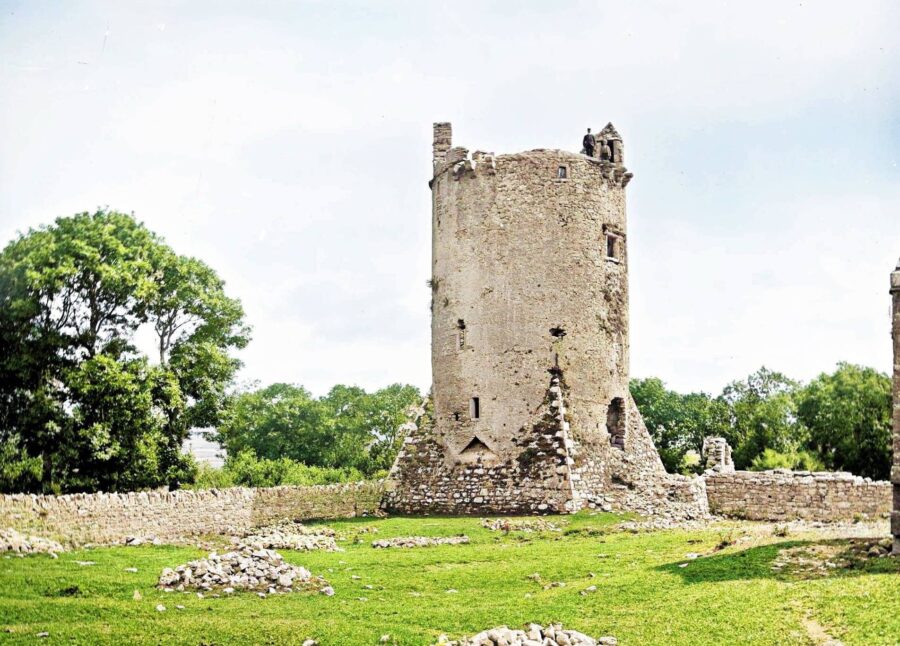Discover the Rich History of Newtown Castle, Clare: A Jewel of Ballyvaughan
Discover the Rich History of Newtown Castle, Clare: A Jewel of Ballyvaughan
Located in the heart of Ballyvaughan, County Clare, Ireland, Newtown Castle is a 16th-century tower house steeped in history and grandeur. Surrounded by the magnificent Burren landscape, this Irish gem has stood the test of time, bearing witness to centuries of political, social, and economic changes. This comprehensive guide will delve into the fascinating history of Newtown Castle, Clare, detailing its beginnings, architectural features, and the role it played in the lives of its various occupants.
The Origins of Newtown Castle, Clare
The story of Newtown Castle, Clare, begins during the 16th century when it was constructed by the O’Loghlen family, a prominent Gaelic clan. The O’Loghlens were descendants of the famous O’Brien dynasty, rulers of the ancient Kingdom of Thomond, which encompassed much of modern-day County Clare. The precise construction date of Newtown Castle remains unknown, but historians believe it was built sometime between 1550 and 1570.
The Tower House Architectural Design
Newtown Castle, Clare, is a prime example of a tower house, a type of fortified residence popular among Irish nobility during the late medieval period. The castle’s design showcases the characteristic features of a tower house, including its rectangular shape, four stories, and a single entrance on the ground floor. This entrance was protected by a “murder hole,” which allowed defenders to pour boiling oil or drop stones on unwanted intruders.
The ground floor also housed a vaulted chamber, which served as storage and possibly a living space during times of unrest. A spiral staircase, built into the thick walls, connected the different levels of the castle. Each floor had a single large room, with the great hall located on the first floor, where the family would entertain guests and hold important gatherings. The upper floors were used as private living quarters for the family, and the top floor had defensive features such as arrow slits and a parapet walk.
The castle’s exterior is marked by distinct corner bartizans, which provided an unobstructed line of sight for defenders to survey the surrounding area. The walls, constructed from local limestone, blend seamlessly with the Burren landscape, further highlighting the castle’s connection to its environment.
The O’Loghlen Family and the Confiscation of Newtown Castle
The O’Loghlens enjoyed a privileged status in Ballyvaughan and the surrounding region, maintaining control over Newtown Castle, Clare, for more than a century. However, their fortunes changed dramatically in the 17th century with the arrival of the Cromwellian forces. Following the Cromwellian conquest of Ireland, the lands and properties of many Gaelic Irish nobles, including the O’Loghlens, were confiscated and redistributed to English settlers.
In 1654, Newtown Castle, Clare, was granted to Sir Thomas Browne, an English soldier who played a significant role in Cromwell’s campaign in Ireland. Browne later sold the castle to another English settler, George Stacpoole, and the O’Loghlen family was forced to relocate to a nearby property.

The Stacpoole Family and the Restoration of Newtown Castle
The Stacpoole family held possession of Newtown Castle, Clare, for several generations. Under their stewardship, the castle underwent a series of restorations and alterations, reflecting the changing tastes and needs of its occupants. One of the most significant changes was the construction of a large, three-story Georgian-style house adjoining the tower house in the early 18th century. This addition provided more comfortable living quarters for the family, as well as a prominent display of their wealth and status.
In the 19th century, Newtown Castle, Clare, entered a period of decline, with parts of the castle falling into disrepair. During the Great Famine (1845-1852), the Stacpoole family experienced financial difficulties, which further impacted the condition of the castle.
20th Century Developments and the Burren College of Art
Despite its declining state, Newtown Castle, Clare, remained in the possession of the Stacpoole family until the early 20th century. In 1936, the castle was sold to a local farmer who used the land for agricultural purposes. The once-great tower house was left to the mercy of the elements and the passage of time.
However, the castle’s fortunes took a turn for the better in the late 20th century when it was purchased by Michael Greene and Mary Hawkes-Greene. The couple embarked on an ambitious restoration project, breathing new life into the historic structure. In 1993, they founded the Burren College of Art, an international art college that has since been housed in the grounds of Newtown Castle.
The Burren College of Art and Newtown Castle Today
Since its establishment, the Burren College of Art has attracted students and artists from around the world, providing a unique and inspiring environment for creative expression. The college hosts a range of undergraduate and postgraduate programs, as well as artist residencies, workshops, and exhibitions.
Newtown Castle, Clare, now serves as a symbol of the college’s commitment to the arts and the local community. The restored tower house is available for guided tours, allowing visitors to explore the castle’s history and architecture firsthand. The castle also hosts a variety of events, including weddings, performances, and cultural gatherings, ensuring that this historic gem remains an integral part of Ballyvaughan’s cultural landscape.
Conclusion
Newtown Castle, Clare, has weathered the trials of time and emerged as a testament to the rich history of Ballyvaughan and County Clare. From its origins as a stronghold of the O’Loghlen family to its transformation into a center for the arts, the castle has evolved to meet the needs of its occupants and the surrounding community. Today, Newtown Castle stands as a proud monument to the enduring spirit of Irish history and heritage, inviting visitors to explore its storied past and participate in its vibrant present.
Did you find this helpful?
IrishHistory.com is a website that relies on community contributions to help make it better. If you have a suggestion to improve this page, or have spotted any errors, please click ‘Suggest an Edit’
